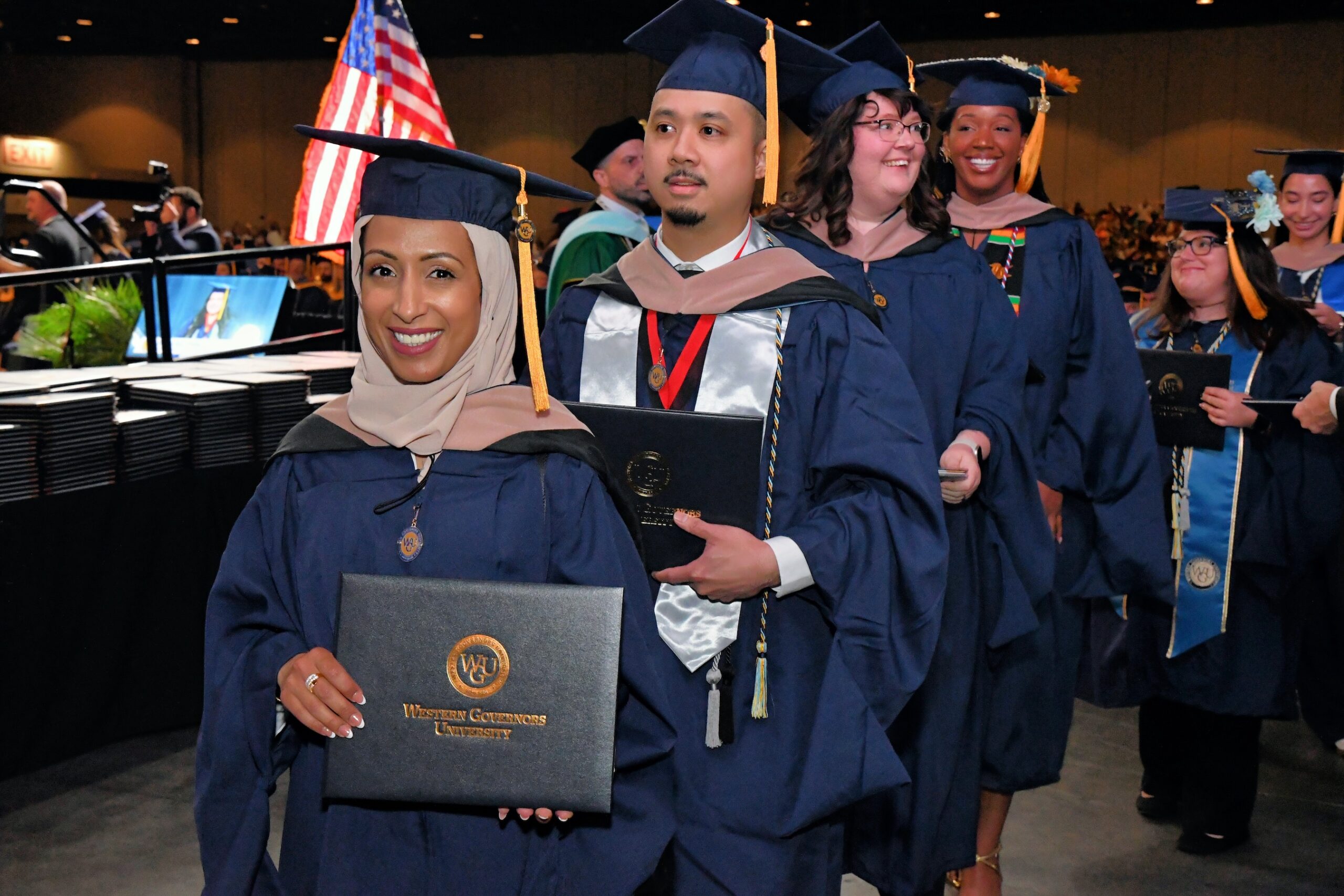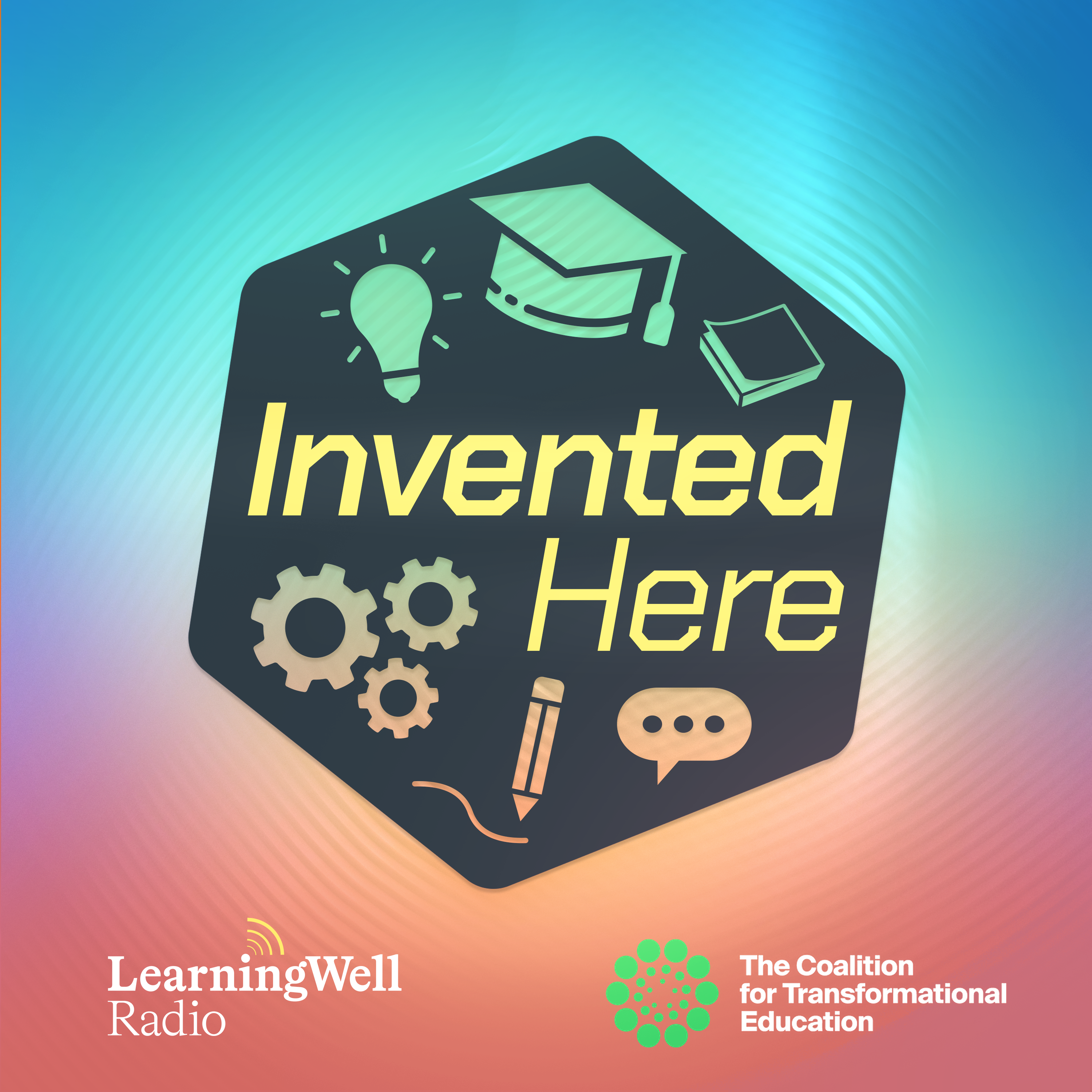When Kevon Pascoe decided to apply for a part-time job at Kentucky Fried Chicken, it wasn’t primarily about the paycheck. He was nearly finished with his contract with the Marine Corps, which had paid for his bachelor’s degree at Norwich University in Vermont. He knew he wanted to pursue an MBA. And he’d just heard about the partnership between KFC and Western Governors University (WGU), an online-only institution.
“I heard about a new program that if you’re an employee at KFC, they will pay for you to go to WGU,” says Pascoe, who emigrated from Jamaica with his brother in 2010. He’d always had a clear vision for his future, and it involved education, hard work, and hustle. When he looked into the details of WGU, he discovered a program that would allow him to work at his own pace, and complete courses quickly based on proving competency in the material. He got the job at KFC working nights while working days in the Marine Corps, and then completed his MBA—as well as a second master’s degree, in Management and Leadership—in one year.
“Some would say that that’s impossible, but it’s because of how flexible WGU is. The concepts that I had within my MBA really kind of correlates with what I did in the Marine Corps as a logistics officer,” says Pascoe. “If I already knew the material, I could test out of it quickly. If I needed help, help was there. Everything was on my pace, on my terms, and that allowed me to find a rhythm and complete it on my own time.”
Pascoe now works for Pfizer full-time as an Incoming Material Testing Manager and is taking advantage of a Pfizer benefit that enables him to pursue an online PhD in organizational management. “That’s kind of who I am, in terms of challenging myself,” he says. “I’m always in a state of learning.”
Kevon Pascoe’s story reflects the effectiveness of WGU for non-traditional students who are drawn by its flexible pacing, flat-rate pricing, and engaged mentoring. But additional evidence came to light when the university began partnering with Gallup to survey its alumni: The survey results revealed satisfaction levels that rival, and often exceed, those of traditional universities—both online and in-person.
WGU alumni, it seems, are not only pleased to have had their needs met with career-ready programs and a commitment to affordability. They are reporting higher levels of satisfaction with their career and calling their degree a worthwhile investment—noteworthy at a time when that investment is sometimes called into question by those mired in debt.
What is WGU?
In 1997, Western Governors University was conceived by 19 U.S. governors who envisioned a flexible university structure for underserved student populations—working adults and mid-career professionals who needed a flexible pathway to their degrees, particularly in high-demand fields such as nursing and IT.
Instead of relying on the traditional credit-hour model, WGU adopted a competency-based education (CBE) model, allowing students to progress by demonstrating mastery of material. This model was designed with flexibility in mind, ideal for adult learners managing jobs or family responsibilities who needed alternatives to on-campus programs to get the degree they were lacking in order to boost their responsibility, title, and earnings. The result was a fully online institution that could cater to students regardless of geographic location or time constraints.
WGU’s flat-rate tuition model enables students to complete as many courses as they can within a six-month term for a single fee. That plan is attractive to this motivated demographic; 93% of its students are over 24 or older (compared to 38% of those at U.S. bachelor’s-granting institutions), 95% are financially independent (compared to 29% nationally), and 57% are married (compared to 11% nationally). The average WGU bachelor’s degree student spends around $6,600 per year on tuition—nearly 40% less than the national average—and after graduation, carries an average loan of $8,228, compared to $18,775 for graduates nationally ($21,335 for those in private universities). On average, they finish their degree in 2.4 years, typically while working—a shorter path that translates to significant savings for adult learners, and an express lane to the job advancements they were seeking with those credentials. In 2021, WGU’s Michael O. Leavitt School of Health produced 17% of the nation’s registered nurses earning a BS in its hybrid prelicensure program (60 percent of the work completed online, 40 percent undertaken in hands-on clinical work in community-based settings).
Gallup Poll: WGU Restoring Confidence in the Value of a Degree
Pascoe’s sentiments towards WGU is not unique. The most recent Gallup survey reflects a level of alumni satisfaction unusually high for any type of institution, both online and traditional.
Gallup surveyed nearly 2,800 WGU alumni who completed their undergraduate degree between 2018 and 2022, collecting information about graduates’ experiences while enrolled, as well as data on postgraduation metrics related to employment and wellbeing. The survey found that WGU alumni were nearly twice as likely to recommend their alma mater as graduates of other schools. Specifically, 76% of WGU alumni reported that they would “highly recommend” the university, compared to the national average of 41%. Three-quarters of WGU graduates trust their university to make decisions with students’ best interests in mind, compared with 39% of graduates nationally. The relationship WGU students have with the faculty and staff at the university is tangible, even though they are not physically together in the classroom: Eight in 10 graduates say they had a mentor at the university who encouraged them to pursue their goals and dreams, which is 28 percentage points higher than the national average (52%). And 73% of WGU alumni strongly agreed that their degree was worth the cost—compared to just 34% of graduates nationwide.
The relationship WGU students have with the faculty and staff at the university is tangible, even though they are not physically together in the classroom.
“Findings show that WGU alumni are far more satisfied with their undergraduate experience than bachelor’s degree holders nationally,” the report concludes. “Graduates are positive about WGU’s student support system, caring and committed faculty, inclusive learning environment and career‑relevant curriculum. Collectively, these factors contribute to why WGU alumni are twice as likely as other college graduates to recommend their alma mater.”
WGU graduates also go on to report high levels of well-being and workplace engagement. Gallup data reveals that 77% of WGU alumni rate their lives positively, a significantly higher proportion than among adults without a degree (50%) and are more likely to be enthusiastic and invested in their work, with 44% of alumni engaged at work compared to 35% of bachelor’s degree holders nationally.
Stephanie Marken, a senior partner at Gallup who led WGU’s research, sees the university’s high satisfaction rates as a direct result of its pragmatic competency-based education (CBE) model, and the type of goal-oriented students who are aware of what they want from it.
“I think when you’re designing curriculum with career in mind, you’re designing very strategically to fit the student’s need. We know empirically, through the survey that Gallup had in partnership with Strada Education Network, that the relevancy of curriculum was one of the strongest predictors of self-reported value of experience,” she says. “And it’s a simple reason, right? That people feel like, ‘I am going to be able to use this information. It is going to be inherently valuable to me in my career.’ And I think WGU is just very laser focused on that.”
For many prospective students, and first-generation students in particular, higher education is a mystery: How is admission decided, how are scholarships determined, how do you quantify how much is worth spending, and how do you know if there’s really a return on investment?
“Higher ed feels like a little bit of a black box. And anything we could do to make it clearer, to show the average outcomes, and what people expect when they graduate, demystifies things,” says Marken. Whenever students can draw a clear line to what was enabled because of a degree, they are going to report greater satisfaction with that degree, and with the choice they made to pursue it. “WGU prioritizes that clarity, which I think help explains the alumni satisfaction rates and self-reported wellness value.”
The Power of Mentorship
While the competency-based model is at the heart of WGU’s appeal, there’s more to it than just flexibility. One of the distinctive features of WGU’s model is its compulsory mentorship program, which provides each student with a dedicated mentor who offers personalized guidance and support. This mentor is solely focused on helping students navigate their academic journey, offering advice on coursework and even helping them manage personal challenges that might impact their studies—say, food assistance, childcare, housing, or other issues that can impact the ability and confidence to be successful.
“Every single student, when they start their program, is assigned a program mentor, and that mentor knows what your goal is. They know what classes you need to complete to get there, and they’re going to help you out all along the way,” says Robert Sullivan, Senior Director of Alumni Engagement. “We are serving a lot of people who arechoosing their education for very specific outcomes, and we are very good at providing the support to make sure they get there.”
For Pascoe, this mentorship was crucial. Jeremy Little was assigned to be his mentor for the MBA, and Pascoe requested Little again for his MSML degree. “That man is awesome. He cheered me on in every aspect. He was there to let me know the results of a practice test, always checking up on me, there to remind me of the motivation, it doesn’t matter what time of the night,” he says. “His care, his commitment, and really his compassion in his job really helped my success in both degrees.”
After a year of an online mentoring relationship, Pascoe and Little were able to meet in person when both traveled to the WGU commencement ceremony. “It’s one thing to create a relationship virtually, but another thing to see that person in real life. Amazing,” he says. “It was just one of those moments where everything just fit together.”
Avoiding debt, aligning values
Students who are able to secure a degree without incurring significant loan debt know full well the bullet they are dodging.
An estimated 42.2 million Americans hold federal student loan debt with a total national balance of over $1.6 trillion, according to the Federal Reserve. Higher education is supposed to improve quality of life, granting access to high-quality jobs that provide greater stability, higher salaries, and critical benefits like healthcare. But the burden of debt risks capsizing the benefits, while causing prolonged stress, anxiety, and feelings of shame.
A 2023 Gallup-Lumina study found that 41% of enrolled bachelor’s students had considered dropping out in the past six months, many citing concerns about paying for their education. And almost 40% of middle and high school youth say they are not interested in pursuing a postsecondary degree.
Helping students avoid that debt, and not be scared away from higher ed, is central to WGU’s mission. “Individual economic outcomes for students is critical,” says Marken. “A lot of their students tend to be underserved populations, and that makes affordable higher education an actual lever for economic mobility when it could have been a significant burden.” The relief and gratitude of alumni of not shouldering tremendous debt, she says, is a further reason for their high levels of satisfaction.
WGU commencement ceremonies take place seven times a year in locations around the country, Sullivan says, and represent the convergence of a few thousand people who have made a conscious choice to prioritize their higher education in a self-paced, self-motivated way. First-generation families. Students and mentors meeting in person for the first time. The first graduate of the KFC Foundation program, Kevon Pascoe, honored with a KFC bucket with his face on it.
“Watching these people walk across the stage to get their degree, it’s a pretty special moment, seeing these students and mentors meet. And the student speaker talking about their life and experience, will make you cry 100% every time, it doesn’t matter how many you’ve seen,” says Sullivan. “When students achieve this degree that made the difference in getting them over the hump to where they wanted to be, it’s no wonder they’re satisfied.”







